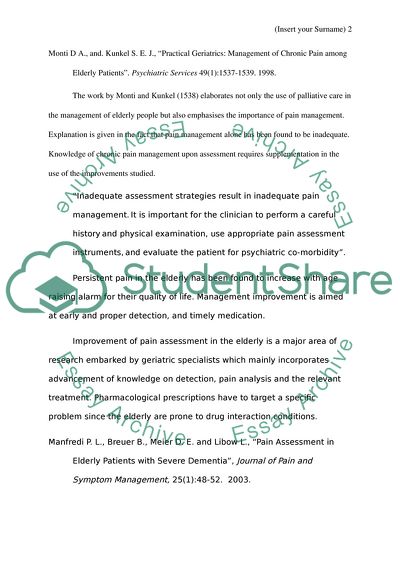Cite this document
(Chronic Pain Assessment and Management in the Elderly Nursing Home Annotated Bibliography, n.d.)
Chronic Pain Assessment and Management in the Elderly Nursing Home Annotated Bibliography. https://studentshare.org/nursing/1741260-assessing-and-managing-chronic-pain-in-elderly-nursing-home-patients
Chronic Pain Assessment and Management in the Elderly Nursing Home Annotated Bibliography. https://studentshare.org/nursing/1741260-assessing-and-managing-chronic-pain-in-elderly-nursing-home-patients
(Chronic Pain Assessment and Management in the Elderly Nursing Home Annotated Bibliography)
Chronic Pain Assessment and Management in the Elderly Nursing Home Annotated Bibliography. https://studentshare.org/nursing/1741260-assessing-and-managing-chronic-pain-in-elderly-nursing-home-patients.
Chronic Pain Assessment and Management in the Elderly Nursing Home Annotated Bibliography. https://studentshare.org/nursing/1741260-assessing-and-managing-chronic-pain-in-elderly-nursing-home-patients.
“Chronic Pain Assessment and Management in the Elderly Nursing Home Annotated Bibliography”. https://studentshare.org/nursing/1741260-assessing-and-managing-chronic-pain-in-elderly-nursing-home-patients.


